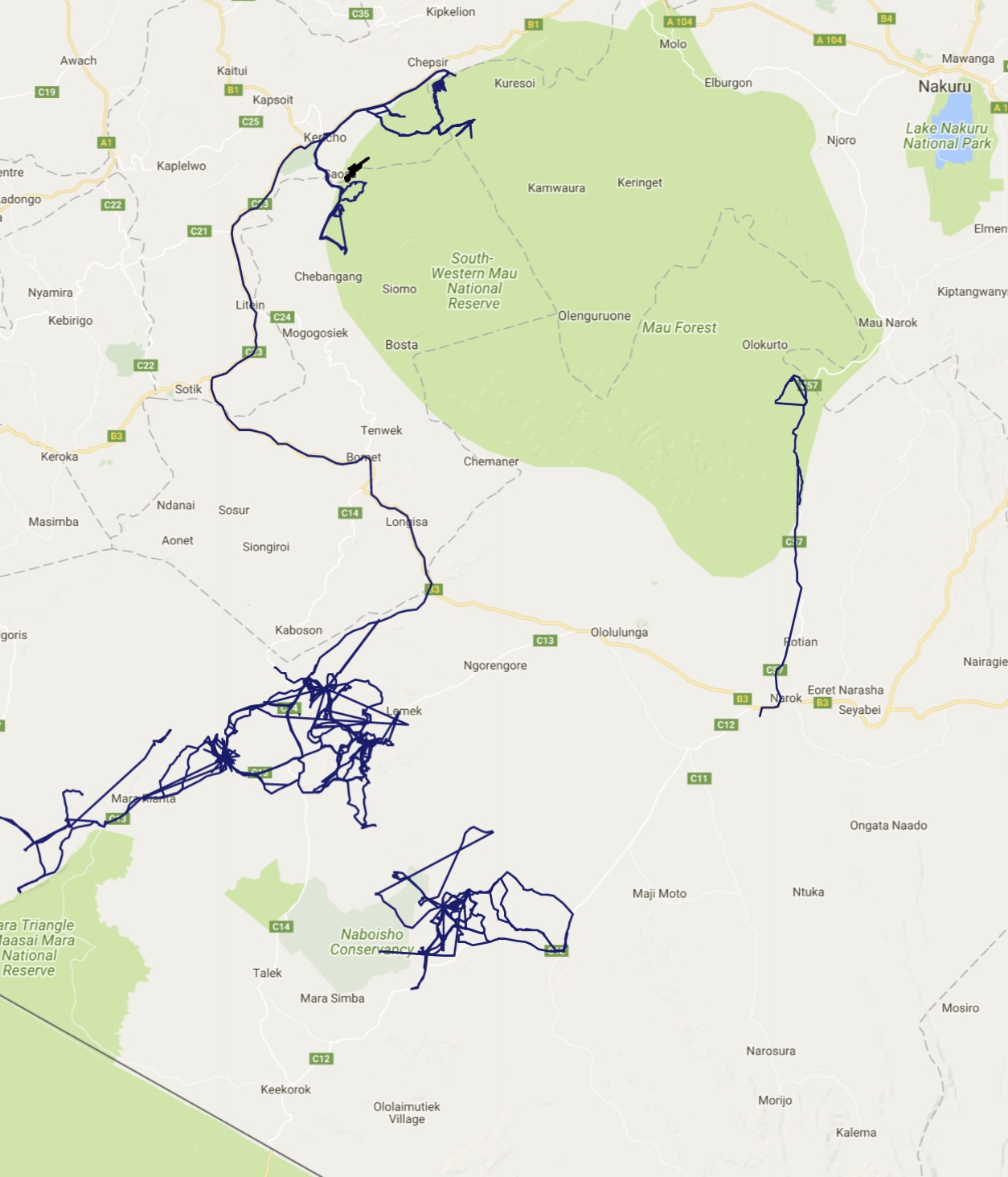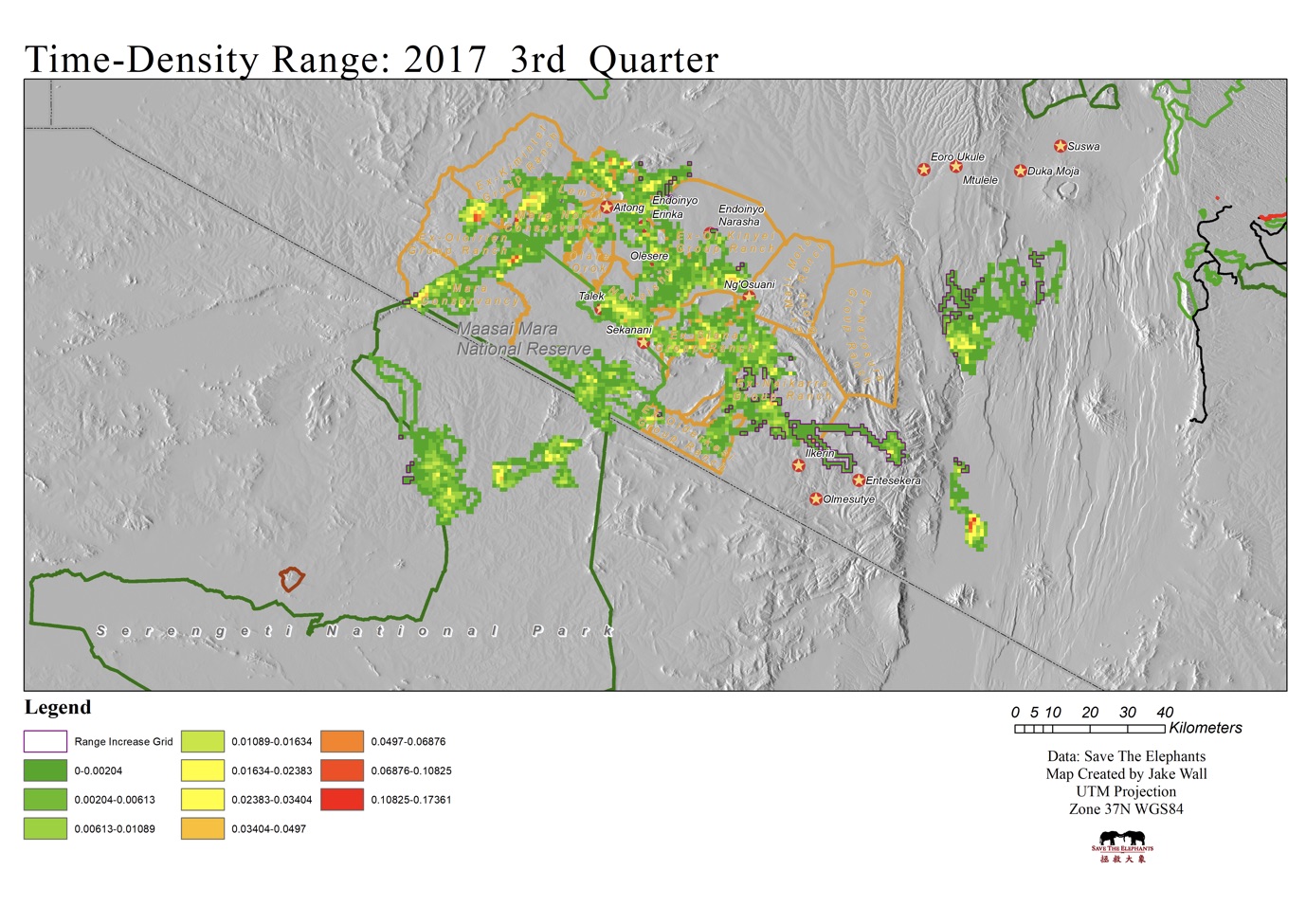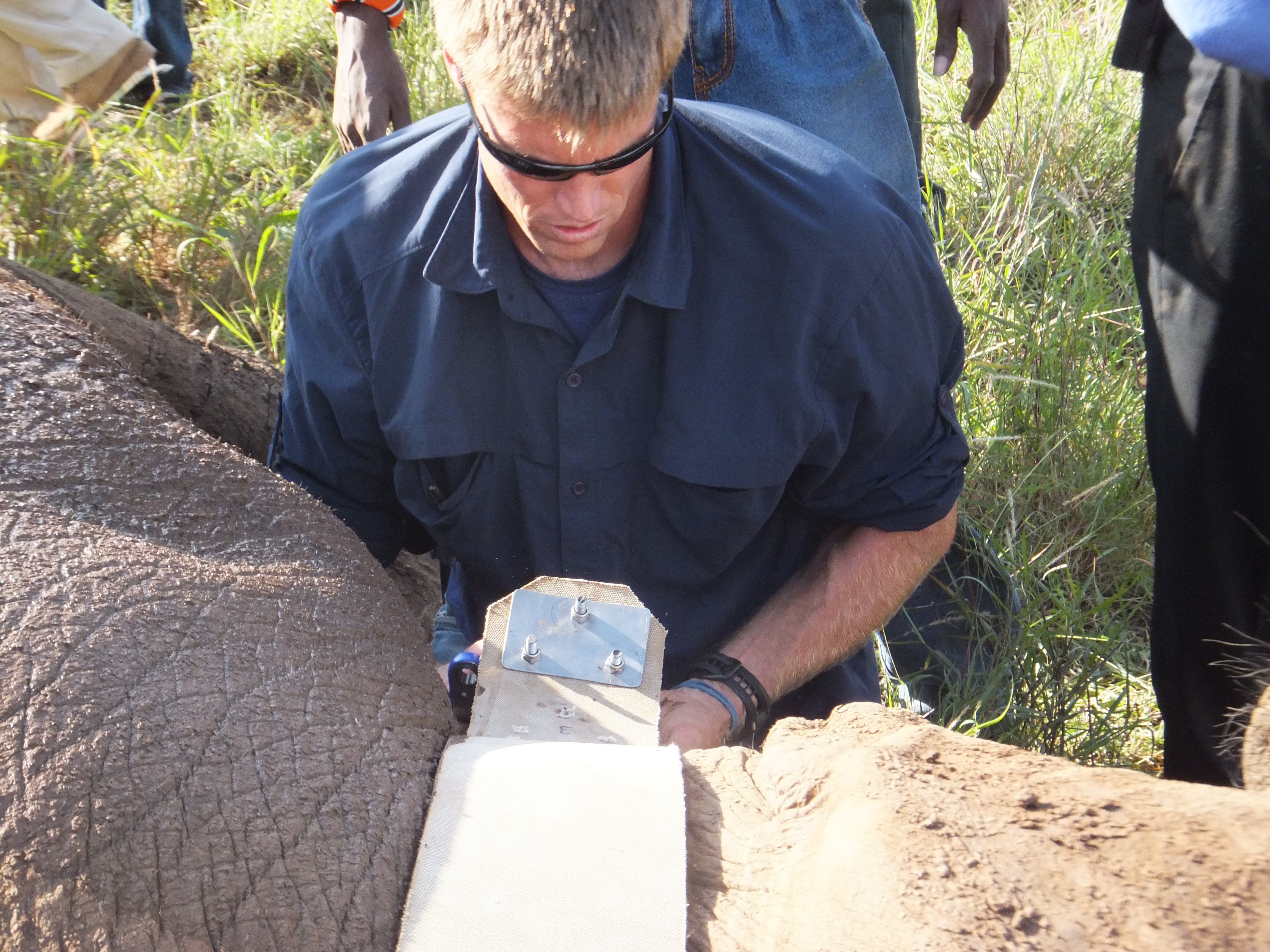Mara Elephant Project is pleased to welcome Dr. Jake Wall in his new role as director of research and conservation. MEP is increasingly a data-driven organization and with this in mind a significant investment of time and resources will be focused on developing its applied research agenda aimed at enhancing the protection of elephants and the habitat upon which they and other wildlife depend.
 Dr. Wall using a VHF tracker to detect the location of a collared elephant while out in the field.
Dr. Wall using a VHF tracker to detect the location of a collared elephant while out in the field.
MEP has been collecting data on the movements of elephants through the use of satellite linked collars. Our elephant collaring approach started in partnership with Save The Elephants and the Kenya Wildlife Service and has developed over the last seven years of operation. The long-term data is a valuable contribution to our understanding of the movements of elephants within the greater Mara ecosystem and establishes a baseline of movement patterns on which we can also monitor changes over time. Concomitantly, MEP is collecting information about the set of factors believed to influence elephant movement, such as vegetation, terrain, water availability and the level of human presence as observed by roads, fences and settlement densities, so that we can analyze movement in relation to these covariates. The ultimate long-term goal is to answer questions about the why, where and when of Mara elephant spatial behavior.

An elephant speed map created to show the rate (slow, medium, fast) in which elephants are moving within the ecosystem.
All of MEP’s data sets are input using a cutting-edge system co-developed by Save the Elephants and Vulcan originally called the Domain Awareness System (DAS), now called EarthRanger. Dr. Wall is one of the architects of EarthRanger and was previously the geospatial scientific advisor to Save the Elephants. Streamlining the data collection process and using one source, EarthRanger, where it can be input or collected is essential to keeping all of this data in a useful and secure place to be analyzed.
Applied conservation research on elephants, especially when combined with data from other wildlife, will help MEP along with government partners, Kenya Wildlife Service and Narok County Government, to inform future spatial ecosystem plans that protect the Mara’s ecosystem functioning and biodiversity. Dr. Wall believes that ongoing collection of data and analysis must continue to provide the evidence underpinning the efforts of not only our organization but all of Kenya in order to protect this critical habitat, its wildlife and people into the future.
In the short-term, MEP currently has 16 collared elephants that provide data that is used daily to mitigate human-elephant conflict, inform ranger deployment and anti-poaching work, and promote transboundary cooperation within the wider ecosystem. The data collected from MEP’s elephant collars is the single best indicator for identifying elephant density hotspots, defining corridors, and illustrating elephant movements. We not only collect data on our elephant collars but ranger patrols, human-elephant conflict (HEC) and HEC mitigation, real-time monitoring alert responses, and the monitoring of illegally killed elephants (MIKE).

A ranger movement map from 2017.
In 2019 specifically, Dr. Wall will spend the first part of the year refining MEP’s research objectives by scoping the extent of past, current and future elephant research and conservation activities in the Mara and will identify those areas where MEP can best focus its efforts. He will establish systems for data collection and reporting to improve MEP’s own capacity to produce actionable intelligence and will then begin to implement MEP’s research strategy by analysis and publication of data and establishing a research network with other individuals and institutions to build MEP’s own research potential. Dr. Wall will also work closely with MEP’s Tracking Manager Wilson Sairowua and a future research assistant to build their capacity in GIS, fieldwork, cartography and data analysis.

Tracking Manager Wilson Sairowua whose main responsibility is monitoring the tracking data of collared elephants and producing monthly tracking reports and maps.
The key data sets Dr. Wall will focus his research on include elephant movement, demography, habitat and MEP patrol and conservation. Elephant movement using GPS tracking provides a fine-grained view of how elephants partition their time across the landscape. This will first be presented in the upcoming publication of the MEP Technical Report; a record of all of MEP’s collared elephants since 2011 that closely records their life history and helps inform future tracking data analyses and provide biological insight.
“Putting a collar on an elephant and having a moving dot on the screen doesn’t tell us everything we want. We need to know about that animal individually: what sex is it, its herd size, age, injuries incurred, etc. We want to provide context to its movement data and produce as many biological annotations as possible. That’s why creating a living database of each of the collared elephants MEP has access to will trigger hypotheses and help us answer the who, what, where, and why questions.” Dr. Wall
MEP would also like to monitor the overall distribution of the greater Mara elephant population to better understand elephant space use in relation to protected areas, unprotected areas and seasonality beyond that available from GPS tracking alone. Edge ecology is of particular importance to the Mara, this is understanding the dynamics along the boundaries of the ecosystem, where community land meets conserved land and knowing where and when elephants spend their time in the vicinity of communities.
“It’s just way too tempting for an animal — where their biology requires them eat 17 hours a day — not to crop raid. Raiding maize is a really quick win for an elephant: get in, get as many calories as possible, then get out again undetected. It’s just going to get worse as the human-protected area boundary grows.” Dr. Wall
One of MEP’s key approaches is community human-elephant conflict mitigation through community engagement and education and all of this data collection ties directly into fulfilling that objective. If we know where elephants travel, when they travel there and why, we can help communities move their livestock, farms and communities to areas less likely to be in the path of wildlife.
“If you ask me how much land we need to protect to keep the ecosystem operating as it should: all of it, immediately, because we’re unlikely to get it back. However, we know that’s unrealistic. Wildlife and humans have co-existed here for a long time. Based on research results and community engagement, we hope to keep enough of the ecosystem intact into the future and allow wildlife and communities to peacefully co-exist.” Dr. Wall
Other research focuses in 2019 include collecting regular field-based demographic, social and biological data on the collared elephants to improve our understanding of their movement ecology. MEP would also like to form a collaboration with the Singita Grumeti Fund to begin to understand the cross-border movements of individuals and share a common database of sightings. Individual ID studies can provide critical insight into population structure (e.g., total population numbers, sex ratios and age structure), social behavior, and act as an early warning system for increased levels of poaching or HEC. MEP will continue to participate in the MIKE program and hopes to take an active role in MIKE harmonization exercises led by KWS every quarter. We also plan to better quantify operational conservation effort and impact by collecting datasets related to the movement of patrol teams and assets. MEP will also continue recording security events and will be hosting these data on its own ‘EarthRanger’ platform early in 2019 and which is at the forefront of protected area management technology.

A time density map created by Dr. Jake Wall showing where elephants are spending time in the ecosystem from 2017.
Dr. Wall is originally from Canada but attended the International School of Kenya in Nairobi while his father served as Ambassador to Kenya for Canada. He has his PhD from the University of British Columbia, Vancouver, an M.Sc. Geography and B.Sc.H. Physics from Queen’s University, Kingston, Canada. He formerly worked on the estimation of soil moisture in an arctic watershed (Cape Bounty, Nunavut) using Radar imagery.

Dr. Wall collaring an elephant while working for Save The Elephants.


